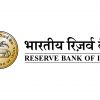 P. Rudran asserts that they are pioneers in an electronic on line auction system which is very effectively used for sale of assets
P. Rudran asserts that they are pioneers in an electronic on line auction system which is very effectively used for sale of assets
P. Rudran, MD & CEO, Assets Reconstruction Company (India) (ARCIL), speaks about how the policy regarding debt recovery has evolved over a period of time and changing business scenario of ARCs:
On 23 January 2014, RBI permitted asset reconstruction companies (ARCs) to convert part of the debt of crisis-ridden companies into equities as part of restructuring process. Such companies are required to obtain, for the purpose of enforcement of security interest, the consent of secured creditors holding not less than 60% of the amount outstanding to a borrower as against 75% at present. RBI says there is a need to ensure that the banking system recognizes financial distress early, takes prompt steps to resolve it, and ensures fair recovery for lenders and investors. For this purpose the regulator has released a discussion paper and now plans to set up a Central Repository of Information on Large Credits (CRILC) to collect, store, and disseminate credit data. The information would also include all types of exposures as defined under RBI Circular on Exposure Norms and will therefore, inter alia, include data on lenders’ investments in bonds/debentures issued by the borrower/obligor.
Banks will have to furnish credit information to CRILC on all their borrowers having aggregate fund-based and non-fund based exposure of `50 million and above. While all scheduled commercial banks will mandatorily contribute their credit information on their borrowers/customers, systemically important non-banking financial companies (NBFC-SI) will also be asked to furnish such information. In addition, banks will have to furnish details of all current accounts of their customers with outstanding balance (debit or credit) of `10 million and above.
Banks will be required to report, among others, the Special Mention Accounts, or SMA, status of the borrower to the CRILC. Individual banks will have to closely monitor the accounts reported as SMA-19principal or interest payment overdue between 31-60 days) or SMA-NF (non-financial) as these are the early warning signs of weaknesses in the account. They should take up the issue with the borrower with a view to rectifying the deficiencies at the earliest .However, to start with, reporting of an account as SMA-2 (principal or interest payment overdue between 61-90 days) by one or more lending banks/NBFC-SIs will trigger the mandatory formation of a Joint Lenders’ Forum and formulation of Corrective Action Plan (CAP).
It is proposed that formation of a joint lenders’ forum (JLF) would be made mandatory for distressed corporate borrowers, engaged in any type of activity, with aggregate fund based and nonfund based exposure of `1000 million and above.
NPAs & ARCs
If the sale of a distressed asset is for a value higher than the Net Book Value (NBV), the excess provision is not allowed to be reversed but banks will have to utilize the same to meet the shortfall / loss on account of sale of other financial assets to Securitization Company (SC) / Reconstruction Company (RC), RBI proposes to allow banks to reverse the excess provision on sale of NPA if the sale is for a value higher than the NBV to its P&L account in the year the amounts are received. Further, as an incentive for early sale of NPAs, RBI will allow banks to spread over any shortfall, ie, if the sale value is lower than the NBV, over a period of 2 years.
The promoters of the company /defaulting borrowers shall be barred from directly/ indirectly buying back the asset from the ARCs. Legal issues involved, if any, would be examined by RBI. In order to encourage liquidity and price discovery of stressed assets, sale of assets between ARCs may be permitted. The issue will be taken up with the government. The ability of the ARCs to raise limited debt funds to rehabilitate units will be considered. This will be accompanied by increasing their minimum level of capitalization in view of recent liberalization of FDI ceilings and enhancement of working funds. The ARCs will be encouraged to reach certain minimum level of AUM targets.
Banks, using ARCs as a price discovery vehicle, should be more transparent, including by disclosing the reserve price and specifying clauses for nonacceptance of bids, etc. If a bid received is above the reserve price and also fulfils the other conditions specified, acceptance of that bid would be mandatory.
Large designated NBFCs could be allowed to assign stressed assets to ARCs. If any of these designated NBFCs are not notified under the SARFAESI Act, the issue of their notification will be taken up with the government. However, a bank /NBFC cannot sell assets to its own promoted ARC or an ARC where it owns at least 10% equity.
As the first ARC, ARCIL has been playing a pioneering role in setting standards for the industry in India. It has been spearheading the drive to recreate value out of NPLs. In 2012-13, it acquired bad loans of `741 crore, against about `100 crore in 2011-12. In 2012-13, it had bought two-thirds of the assets through cash, and a third by way of security receipts.
P. Rudran, MD & CEO, sheds light on the role of ARCIL and how it has helped contain the menace of NPAs:
Mehul Dani: How are accounts restructured? Do the increasing NPAs create scope of more business for ARCs?
P. Rudran: Accounts are restructured based on their potential viability. If there is a viable business ahead, which would have been hampered due to genuine business losses or economic conditions or change in government regulations, then such accounts, with or without additional infusion of funds, can be restructured. The question is future viability and whether the unit once restructured will be able to repay its liabilities. As regards whether increasing NPAs create scope of more business for ARCs, my answer is ‘yes’ because ARCs deal in NPAs and any increase in the availability of NPAs should normally increase the business of ARCs. However, this is purely a sellers’ market and the sale and purchase should happen based on the understanding of sellers and buyers. It is a commercial deal eventually. ARCIL is very positive and optimistic about increasing its business share. We have been approaching banks with this end in view. It also generally happens that ARCIL is the first port of call for NPA resolution and many seller banks call us when they want to sell NPAs and sometimes seek our advice.
What is your estimate about the extent of aggregate NPAs in Indian banks?
The NPA of banks have reached to an all time high in a decade. Gross NPA of 40 listed banks stood at `229,007 crore as at end of September 2013 which is 27% higher than `179,891 crore in March 2013. According to various estimates being made, the trend in growth in NPAs will continue for some more time.







